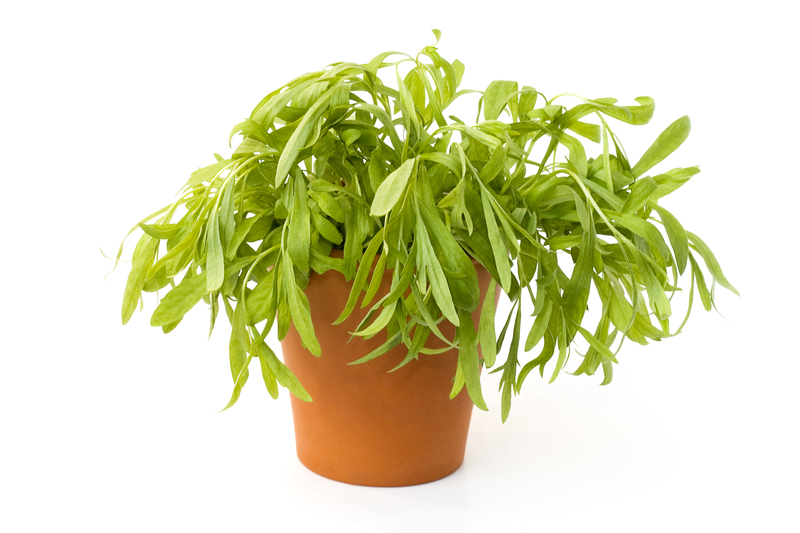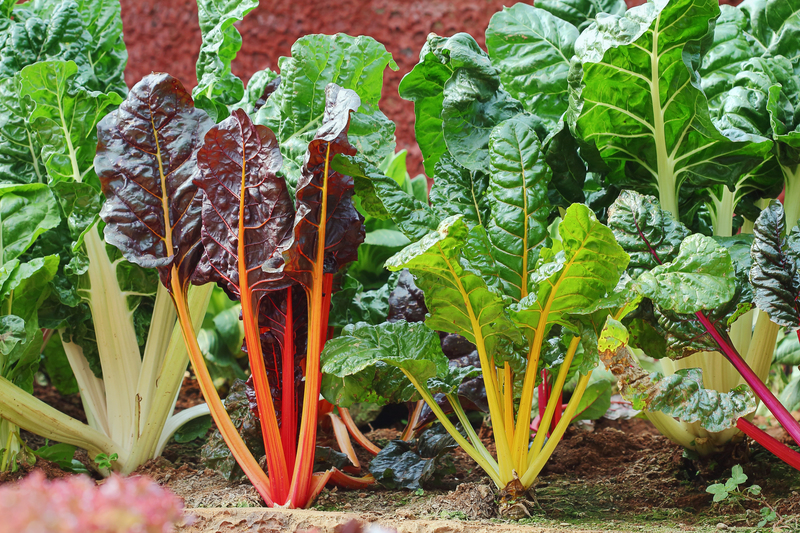Grow These Stunning Tropical Plants in Your UK Home Garden
Are you dreaming of transforming your outdoor space into an exotic retreat? You don't need to live in the Caribbean to enjoy the lush and vibrant tropical plants that evoke paradise. The good news is that many tropical plants can thrive in the unique climate of the UK, with just a bit of planning and care. In this comprehensive guide, explore the best exotic species for your UK home garden, learn practical growing tips, and discover how to create a show-stopping verdant oasis right at your doorstep. Get ready to unlock the secrets of growing tropical plants in the UK--and watch your garden come alive with color, drama, and exotic charm!
Why Choose Tropical Plants for Your UK Garden?
Tropical plants are renowned for their bold foliage, vivid blossoms, and architectural beauty. Introducing them into your garden can elevate even the most ordinary space, offering:
- Unrivaled Visual Drama: Large leaves, intense colors, and unique textures create an immediate statement.
- Exotic Escape: A lush tropical garden evokes the feel of a holiday destination just outside your door.
- Thriving Biodiversity: Many exotic plants attract pollinators like bees, butterflies, and even birds.
- Year-Round Interest: With clever plant selection, your tropical garden can look attractive through every season.
But can these stunning plants truly survive in unpredictable British weather? The answer is yes! With the right approach (and some clever plant choices), you can create a garden that's both beautiful and resilient.

Top Tropical and Exotic Plants for UK Gardens
Mix and match these spectacular species for a vibrant, diverse, and low-maintenance tropical garden. Here are some of the best tropical plants to grow in the UK:
1. Tree Fern (Dicksonia antarctica)
- Appearance: Elegant, feathery fronds unfurl from thick, ancient-looking trunks.
- Hardiness: Hardy down to -10?C with winter protection. Ideal for sheltered, shady corners.
- Growing Tips: Regular watering is crucial, especially in dry spells. Mulch the crown for insulation during frosts.
2. Musa Basjoo (Hardy Banana)
- Appearance: Huge, paddle-shaped leaves give a real jungle vibe. Reaches up to 4 meters tall in mild areas!
- Hardiness: The most cold-tolerant banana, surviving -5?C to -10?C with root protection.
- Growing Tips: Plant in full sun, feed generously in growing season, and wrap stems in fleece overwinter.
3. Canna Lilies (Canna indica & hybrids)
- Appearance: Bold, tropical leaves paired with dazzling red, orange, or yellow flowers.
- Hardiness: Rhizomes must be lifted and stored frost-free or mulch deeply in mild gardens.
- Growing Tips: Full sun, moisture-retentive soil, and regular feeding encourage lush growth and blooms.
4. Japanese Aralia (Fatsia japonica)
- Appearance: Glossy, hand-shaped leaves bring instant drama and thrive year-round.
- Hardiness: Extremely hardy and shade-tolerant for difficult spots.
- Growing Tips: Tolerates shade and neglect. Benefits from shelter from strong winds to prevent leaf damage.
5. Windmill Palm (Trachycarpus fortunei)
- Appearance: Classic fan-like palm fronds and fibrous trunk form an instant tropical focal point.
- Hardiness: Endures to -15?C, making it the most reliable palm for UK gardens.
- Growing Tips: Prefers sun or partial shade, well-drained soil, and protection from harsh winds.
6. Ginger Lily (Hedychium species)
- Appearance: Striking, fragrant blossoms and bold upright foliage.
- Hardiness: Varies by species: some hardy to -10?C with mulch, others need overwintering indoors.
- Growing Tips: Moist, rich soil in partial sun, with high summer feeding for best blooms.
7. Tetrapanax papyrifer (Rice Paper Plant)
- Appearance: Huge, deeply-lobed leaves for unparalleled impact. Reaches up to 4m tall!
- Hardiness: Survives -6?C to -10?C with mulch.
- Growing Tips: Provide space to spread and shelter from wind.
8. Elephant's Ears (Colocasia and Alocasia species)
- Appearance: Gigantic, heart-shaped leaves for a truly tropical look, best grown in pots or sheltered spots.
- Hardiness: Generally tender: overwinter indoors or bring pots under cover.
- Growing Tips: Enjoys warmth, frequent watering, and high humidity.
9. Hibiscus syriacus (Rose of Sharon)
- Appearance: Large, showy blooms in late summer look positively exotic!
- Hardiness: Fully hardy in most UK gardens.
- Growing Tips: Sun-loving and easy to grow; prune in spring for best flowers.
10. Passionflower (Passiflora caerulea)
- Appearance: Dramatic, intricate flowers with a truly tropical appearance, vigorous climber.
- Hardiness: Hardy to -10?C; thrives on a warm, sunny wall.
- Growing Tips: Mulch roots well and provide support for climbing.
Essential Tips for Growing Tropical Plants in the UK
Transforming your space into a tropical wonderland is easier than you think. Here are expert tips to ensure your exotic plants flourish in the British climate:
1. Choose Hardy or Adaptable Species
Select tropical varieties known for their cold tolerance or adaptability. Look for terms like 'hardy' on plant labels, or seek guidance from local nurseries specializing in exotics.
2. Site Selection and Microclimates
- Plant tender species in sheltered spots--against south- or west-facing walls, under large trees, or in courtyards--which stay warmer and buffer winds.
- Use fences, hedges, and evergreens to create protective microclimates for sensitive plants.
3. Soil Preparation and Drainage
- Good drainage is essential for most tropical plants; heavy clay soils should be improved with grit, organic matter, or by constructing raised beds.
- Add mulch to conserve moisture and insulate roots from cold temperatures.
4. Feeding and Watering
- Tropical plants are hungry feeders. Apply a balanced fertilizer every few weeks during spring and summer for optimum growth.
- Keep soils consistently moist, especially during hot spells; some large-leafed exotics may need daily watering in pots.
- Mist foliage for species preferring high humidity, like Colocasia and Alocasia.
5. Overwintering Strategies
- For borderline-hardy or tender plants, cover crowns/root zones with thick mulch or straw in autumn.
- Wrap stems of bananas and tree ferns with horticultural fleece and bubble wrap.
- Move potted tropicals like Cannas, Colocasias, and tender palms into a greenhouse, conservatory, or unheated room.
- Lift rhizomes and tubers of Cannas and Dahlias for dry storage indoors.
Designing Your Tropical Paradise: Inspirational Tips
To craft an unforgettable tropical theme garden in the UK, follow these expert design tips:
- Layering: Mimic a rainforest by planting tall, canopy-forming species (palms, bananas, tree ferns) at the back; mid-sized shrubs (Fatsia, rice paper plant, gingers) in the middle; and bold-leafed ground cover (hosta, colocasia) at the front.
- Repetition: Group exotics with similar foliage for visual impact.
- Contrast: Play with contrasting leaf textures and colors. Mix deep greens with silver, burgundy, or variegated foliage.
- Accessorize: Add gravel paths, dramatic pots, bold ornaments, or a small pond for extra jungle atmosphere.
Recommended Layout for a Small UK Tropical Garden:
- Backdrop: Trachycarpus fortunei (windmill palm) and Musa basjoo (hardy banana).
- Midstroke: Fatsia japonica, ginger lilies, and hibiscus.
- Foreground: Colocasia, Alocasia, hostas, and colourful Cannas.
- Vertical Interest: Passiflora caerulea on a trellis or wall.
Combine foliage, height, color, and structure for a lush, immersive effect that transports you to the tropics!
Common Challenges and Solutions for Tropical Gardening in the UK
-
Frost and Cold Damage:
Protect roots, use fleece, mulch generously, and choose the hardiest types for outdoor planting. -
Slugs and Snails:
Large-leafed exotics like hostas and colocasia attract these pests; use organic controls or copper bands. -
Excessive Winter Wet:
Improve drainage and avoid low-lying soggy areas when planting tropical plants outdoors. -
Wind Damage:
Plant large-leafed species in sheltered spots and stake young palms or bananas until established.

Frequently Asked Questions
Can I grow tropical plants in pots in the UK?
Absolutely! Many tropical plants for UK gardens thrive in containers, allowing you to move them indoors for winter protection. Pot-grown exotics include canna lilies, bananas, colocasia, and even miniature palms.
How fast do tropical plants grow in the UK climate?
Growth rates depend on summer warmth, sun, feeding, and species chosen. Bananas and cannas grow rapidly with regular feeding, while tree ferns and palms are slower but steadily increase in size each year.
When should I plant tropical exotics outside?
Plant in late spring or early summer once all risk of frost has passed. This gives exotics maximum time to establish before colder months.
Conclusion: Transform Your Outdoor Space into an Exotic Hideaway!
With the right plant selection, winter strategies, and creative design, you can grow exotic tropical plants in your UK garden and enjoy a year-round getaway without leaving home. Whether you've got a tiny courtyard, a patio for pots, or a spacious lawn, these verdant superstars promise lush foliage, dazzling flowers, and enduring color.
Get started this planting season--your very own slice of the tropics awaits in the heart of the UK!